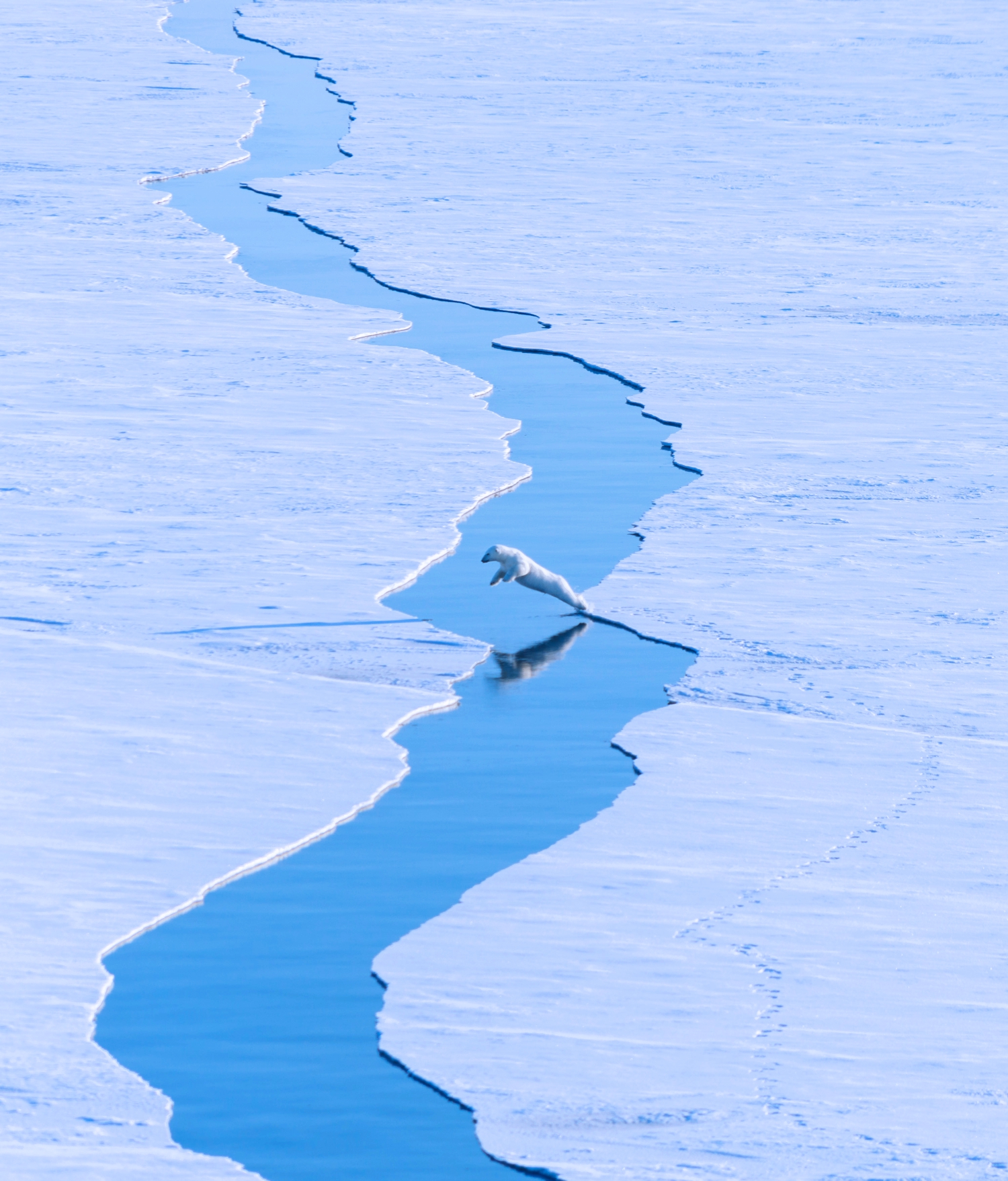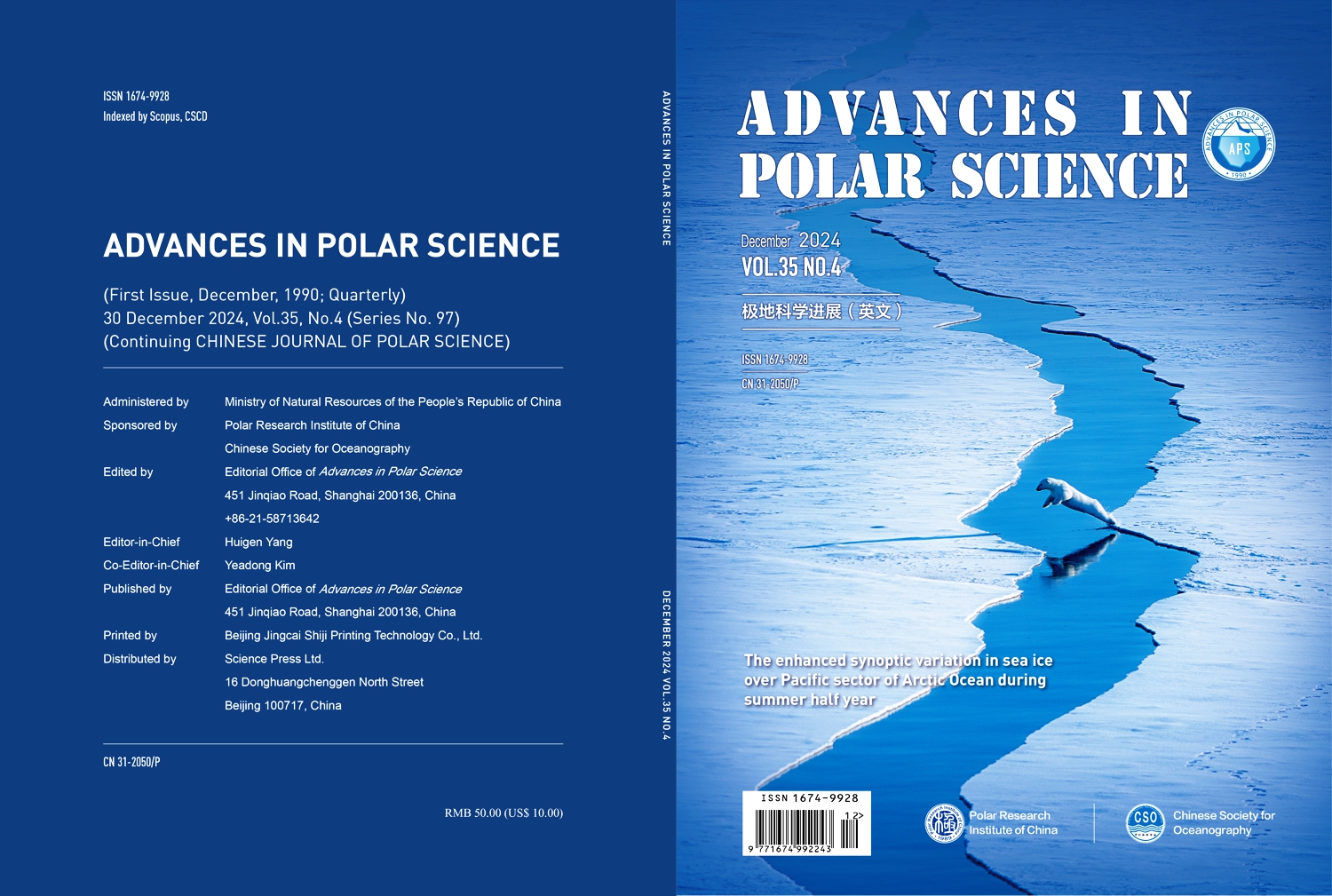The peer-reviewed journal The peer-reviewed journal Advances in Polar Science (APS) has released its latest issue, Volume 35, Issue 4, in December 2024. This issue highlights critical topics, including the transformation of the Arctic economy, food safety in reindeer meat, synoptic variations in Arctic sea ice, atmospheric gaseous elemental mercury, and the Central Arctic Ocean Fisheries Agreement. For more details on this issue and access to the articles, visit the APS website:aps.chinare.org
Summaries of five selected papers from this issue are provided below.
1. Arctic economy transformation: a prospective from blue economy, natural resources, technology innovation and international partnerships
The Arctic region, once perceived solely through the lens of climate and environment, is now emerging as a vibrant hub of dynamic business opportunities in the context of a bit more rapid climate change than expected. This paper explores the profound transformation underway in Arctic economies, fueled by natural resources, technological solutions, and international partnerships that respect and benefit the Arctic Indigenous peoples. (Citation: Frederiksen M Q. Arctic economy transformation: a prospective from blue economy, natural resources, technology innovation and international partnerships. Adv Polar Sci, 2024, 35(4): 401-404, doi:10.12429/j.advps.2024.0032)
2. Impacts of lead and mercury on reindeer (Rangifer tarandus) meat food safety: a systematic review and meta-analysis
This review aims to consolidate information about (1) Pb and Hg concentrations in reindeer (Rangifer tarandus) meat from different Arctic regions and the factors affecting the concentrations and (2) the effects of Pb and Hg on human health in the Arctic. A total of 3614 publications from January 1980 to November 2023 were scrutinized. Thirty-four relevant studies from Canada, Finland, Greenland (Denmark), Norway, Russia (covering six high latitude regions), Sweden, and the USA were selected for synthesis. The highest Hg concentrations in reindeer meat from Arctic regions were found in samples from Alaska (USA), Canada, Greenland (Denmark), the Nenets Autonomous Okrug (Russia), and Sweden, and the highest Pb concentrations were found in samples from Greenland (Denmark), the Nenets Autonomous Okrug (Russia), Norway, and the Taimyr Peninsula (Russia). The Pb and Hg concentrations in reindeer meat from Finland and the Yamal-Nenets Autonomous Okrug (Russia) were relatively low. The results indicated that extractive industries in Arctic regions are important sources of toxic metals such as Pb and Hg in reindeer meat. (Citation: Andronov S V, Lobanov A A, Bogdanova E N, Luo Ying& Zeng Desong. Impacts of lead and mercury on reindeer (Rangifer tarandus) meat food safety: a systematic review and meta-analysis. Adv Polar Sci, 2024, 35(4): 405-420, doi: 10.12429/j.advps.2024.0020)
3. Atmospheric gaseous elemental mercury in the Arctic: role of long-range transport and sea ice
The change in gaseous elemental mercury (GEM) at Arctic Svalbard Archipelago during January, February and October in 2010 was dominated by long-range transported anthropogenic emissions, and the main sources were unintentional industrial sources (49%), stationary combustion sources (33%), and intentional use and product waste-associated sectors (18%). Europe was the important source region for atmospheric GEM at Arctic Svalbard Archipelago during January, February and October in 2010. Sea ice concentration was an important factor affecting GEM at Arctic Alert region during the summer of 2010. (Citation: Qiu Y, Yue F G, Jiang B, et al. Atmospheric gaseous elemental mercury in the Arctic: role of long-range transport and sea ice. Adv Polar Sci, 2024, 35(4): 449-458, doi: 10.12429/j.advps.2023.0009)
 4. The enhanced synoptic variation in sea ice over Pacific sector of Arctic Ocean during summer half year
4. The enhanced synoptic variation in sea ice over Pacific sector of Arctic Ocean during summer half year
This study investigates the synoptic Arctic sea ice variation during the summer half year based on a regional daily sea ice concentration tendency index during 1979–2021. Results indicate an enhancement in synoptic sea ice concentration variation over the Arctic Pacific Ocean, with the maximum amplitude concentrating along the sea ice edge to covering a larger domain. Most synoptic severe sea ice variations occur for a single day or 2–3 days, typically starting after mid-June and ending in mid-November over Beaufort-Chukchi seas. However, there is a clear shift in ending time over the East Siberian-Laptev seas from early October to early November. Further analysis suggests that wind-driven sea ice drift may significantly contribute to the amplification of synoptic sea ice variation. This result contributes to our understanding of regional Arctic sea ice predictability, particularly in relation to the Arctic northeast shipping passage. (Citation: Li Y J, Jiang Z N, Dai G K, et al. The enhanced synoptic variation in sea ice over Pacific Sector of Arctic Ocean during summer half year. Adv Polar Sci, 2024, 35(4): 438-448, doi: 10.12429/j.advps.2024.0003)
5. Central Arctic Ocean Fisheries Agreement: China’s role and implications for sustainable Arctic governance
The opening of the Arctic Ocean has prompted the signing of the Agreement to Prevent Unregulated High Seas Fisheries in the Central Arctic Ocean (CAOF Agreement) by 10 parties, including the five Arctic coastal states and the world’s leading distant-water fishing states. The negotiation process, initiated by the United States, progressed in two stages: the “A5 process” and the “A5+5 process”. The CAOF Agreement sets a precedent for cooperation between Arctic and non-Arctic states in managing Arctic high seas resources. It also incorporates several innovative management approaches for Arctic fisheries, such as the precautionary approach, ecosystem-based management, and state-of-the-art scientific knowledge as the basis for decision-making. Since 2015, China has actively participated in the negotiation and implementation of the CAOF Agreement. This article carefully analyzes the background and progressiveness of the CAOF Agreement and examines the responsibility that all state parties share concerning the sustainable use of marine living resources in the Central Arctic Ocean. The article also reviews China’s interests and engagement in the Arctic region, with particular attention to its participation in the CAOF Agreement. Finally, the article concludes by discussing China’s role and implications for sustainable Arctic governance and its broader implications for evolving international environmental and ocean governance. (Citation: Shan Y Y, Lin H. Central Arctic Ocean Fisheries Agreement: China’s role and implications for sustainable Arctic governance. Adv Polar Sci, 2024, 35(4): 473-481, doi: 10.12429/j.advps.2024.0021)
Source: Advances in Polar Science, Polar Research Institute China
Related news:
New Website for the Journal “Advances in Polar Science” Now Available
Highlights of Papers Published in Issue 34(1) of Advances in Polar Science (APS)
The tags below provide an opportunity to view previously posted related news within the selected category

